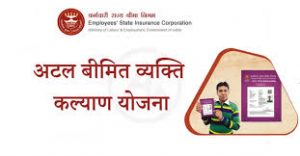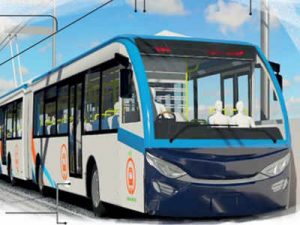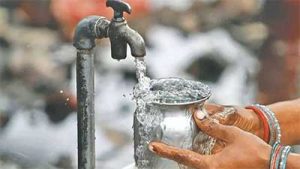Today Current Affairs: 4th February 2021 for UPSC IAS exams, State PSC exams, SSC CGL, State SSC, RRB, Railways, Banking Exam & IBPS, etc
Table of Contents
Fishing Cat Conservation Alliance:

The Fishing Cat Conservation Alliance started a worldwide campaign to raise awareness for the conservation of fishing cats.
- The Fishing Cat Conservation Alliance is a team of conservationists, researchers, and enthusiasts working to achieve functioning floodplains and coastal ecosystems that ensure the survival of the fishing cat.
- Scientific Name: Prionailurus viverrinus.
- It is twice the size of a house cat.
- The fishing cat is nocturnal (active at night) and apart from fish also preys on frogs, crustaceans, snakes, birds, and scavenges on carcasses of larger animals.
- The species breed all year round.
- They spend most of their lives in areas of dense vegetation close to water bodies and are excellent swimmers.
- Fishing cats have a patchy distribution along the Eastern Ghats. They abound in estuarine floodplains, tidal mangrove forests and also inland freshwater habitats.
- Apart from Sundarbans in West Bengal and Bangladesh, fishing cats inhabit the Chilika lagoon and surrounding wetlands in Odisha, Coringa and Krishna mangroves in Andhra Pradesh.
- Wetland degradation and conversion for aquaculture and other commercial projects, sand mining along river banks, agricultural intensification resulting in loss of riverine buffer and conflict with humans in certain areas resulting in targeted hunting and retaliatory killings.
Protection Status:
- IUCN Red List: Vulnerable. Despite multiple threats, the Fishing Cat was recently downlisted to “Vulnerable” from “Endangered” in the IUCN Red List species assessment.
- CITES: Appendix II
- Indian Wildlife Protection Act, 1972: Schedule I
- Recently, the Fishing Cat Conservation Alliance has initiated a study of the biogeographical distribution of the fishing cat in the unprotected and human-dominated landscapes of the northeastern Ghats of Andhra Pradesh.
- In 2012, the West Bengal government officially declared the Fishing Cat as the State Animal and the Calcutta Zoo has two big enclosures dedicated to them.
- In Odisha, many NGOs and wildlife conservation Societies are involved in Fishing Cat research and conservation work.
- The Fishing Cat Project, launched in 2010 started raising awareness about the Cat in West Bengal.
Atal Beemit Vyakti Kalyan Yojana:

Employee’s State Insurance Corporation (ESIC) has decided that in cases where the employer has shown “Zero” contribution in respect of an employee for some months before exiting him from the system, the relief under ABVKY for such period of “Zero” contribution, shall also be allowed.
- It was brought to the notice of ESIC that in some cases employers have struck off their employees from the rolls a few months after actually terminating them from service.
- During this period, ESI contribution was also not filed by the employers for these employees in the system.
- As the relief under Atal Beemit Vyakti Kalyan Yojana is available only in case of unemployment of the Insured Persons, such employees though terminated from service became ineligible for relief under this scheme.
- It is a welfare measure being implemented by the Employee’s State Insurance (ESI) Corporation.
- It offers cash compensation to insured persons when they are rendered unemployed.
- The Scheme was introduced in 2018.
One District One Product (ODOP)” Scheme:

To support the production of horticultural items under the “One District One Product (ODOP)” scheme and provide better nutrition to school children, the Uttar Pradesh government may introduce Sunahri Kand, also known as orange-fleshed sweet potatoes, in the hot-cooked food scheme of Anganwadis and the mid-day meal scheme in primary schools.
- Under the initial phase of the ODOP programme, 106 Products have been identified from 103 districts across 27 States.
- State Export Promotion Committee (SPEC) and District Export Promotion Committee (DEPC) have been constituted in all states and districts of India, except districts of the state of West Bengal.
About the Scheme:
- First started by the Uttar Pradesh government.
- ODOP is aimed at giving a major push to traditional industries synonymous with the respective districts of the state.
- The objective of the ODOP is to optimize production, productivity and income, preservation and development of local crafts, promotion of art, improvement in product quality and skill development.
- ODOP is basically a Japanese business development concept, which gained prominence in 1979. It is aimed at promoting a competitive and staple product from a specific area to push sales and improve the standard of living of the local population.
- Over time, it has been replicated in other Asian countries as well.
New START (Strategic Arms Reduction Treaty) nuclear arms control treaty:

President Joe Biden and his Russian counterpart Vladimir Putin reportedly discussed it by phone a week ago, and subsequently, Mr. Putin signed it into law on Friday.
- The treaty had been set to lapse on 5 February, as the Trump administration had refused to approve the extension.
- Now the pact has been extended to 5th February 2026.
- The treaty, which first went into effect in 2011, limits the United States and Russia to deploying no more than 1,550 strategic nuclear warheads each and imposes restrictions on the land- and submarine-based missiles and bombers to deliver them.
MetroNeo:

By making a sizeable budgetary allocation for MetroNeo in the Union Budget, the central government has paved the way for the innovative system of mass transport, which could soon be replicated across the country.
- To be adopted for the first time in the country in Maharashtra’s Nashik,
- MetroNeo is a comfortable, rapid, energy-efficient, and less noisy transport medium.
- The central government recently urged all state governments to consider using MetroNeo technology in their tier-2 and tier-3 cities.
- The MetroNeo service consists of electric bus coaches – their lengths varying from 18 to 25 metres – with a carrying capacity of 200 to 300 passengers at a time.
- The buses will have rubber tyres and draw power from an overhead electric wire with 600-750 V DC supply, similar to railways or trams.
- The buses will be air-conditioned, with an automatic door closing system, level boarding, comfortable seats, passenger announcement system, and an information system with an electronic display.
- The stations will be similar to other Metro rail stations.
India Sri Lanka Relations:

After strong opposition from trade unions across the country, Sri Lanka has unilaterally pulled out of a 2019 agreement with India and Japan for developing the strategic East Container Terminal (ECT) at the Colombo Port.
- In 2019, India and Sri Lanka signed a memorandum of understanding for “co-operation on economic projects”.
- The MoU did not mention the Eastern Container Terminal, but India and Sri Lanka had already been in discussion for its development and operation.
- Although India and Sri Lanka have seemingly friendly ties and much cultural affinity and people-to-people contact, the relationship is complex.
- The majority Sinhala-Buddhist public opinion is layered with the memory of Indian intervention in the ethnic conflict.
- Thus, unlike Chinese projects, big projects by India have always faced opposition in Sri Lanka.
- For India, the ECT deal was important as between 60 and 70 per cent of transhipment that takes place through it is India-linked.
- The ECT is also considered more strategic than any other in Colombo Port. It is located next to the Colombo International Container Terminal (CICT) project, a joint venture between China Merchants Port Holdings Company Ltd. and SLPA.
Aatmanirbharta’ Or Self-Reliance:

Oxford Languages has chosen ‘Aatmanirbharta’ or self-reliance as its Hindi word of the year for 2020.
- The 2019 Oxford Hindi word of the year was “Samvidhaan” or Constitution as the panelists felt that in 2019, the abrogation of Article 370 and the Supreme Court’s judgment on the Ram Janmabhoomi-Babri Masjid dispute brought attention to the Constitution.
- Even so, while the word of the year shows that the term resonated with the people during a given year, it does not guarantee its addition to the Oxford dictionary.
- Oxford’s Word of the Year is a word or an expression that has attracted a great deal of interest in the preceding year.
- For 2020, Oxford Languages has not chosen a single word in English since they believe that the year cannot be summed up using one single word.
- Therefore, this year they have released a report titled, “Words of an Unprecedented Year” in which they have analyzed themes such as COVID-19 and terms related to it such as lockdown, social distancing, Black Lives Matter, etc.
- In 2019, the English word of the year was “climate emergency”, in 2018 it was “toxic” and in 2017 it was “Youthquake”.
Lithium Deposits:

Preliminary surveys on the surface and limited subsurface by Atomic Minerals Directorate for Exploration and Research (AMD) have shown the presence of Lithium resources of 1,600 tonnes in the pegmatites of Marlagalla – Allapatna area, Mandya district, Karnataka.
About Lithium:
- It is a soft, silvery-white metal. Under standard conditions, it is the lightest metal and the lightest solid element.
- It is highly reactive and flammable, and must be stored in mineral oil. It is an alkali metal and a rare metal.
- It has the highest specific heat capacity of any solid element.
- It is flammable and can even explode when exposed to air and water.
- Uses:
- Lithium is a key element for new technologies and finds its use in ceramics, glass, telecommunication and aerospace industries.
- The well-known uses of Lithium are in Lithium ion batteries, lubricating grease, high energy additive to rocket propellants, optical modulators for mobile phones and as convertor to tritium used as a raw material for thermonuclear reactions i.e. fusion.
Prescribed substance:
- The thermonuclear application makes Lithium as a “Prescribed substance” under the Atomic Energy Act, 1962 which permits AMD for exploration of Lithium in various geological domains of the country.
- Under the Atomic Energy Act, 1962, “Prescribed Substance” means any substance including any mineral which the Central Government may, by notification, prescribe, being a substance which in its opinion is or may be used for the production or use of atomic energy or research into matters connected therewith and includes uranium, plutonium, thorium, beryllium, deuterium or any of their respective derivatives or compounds or any other materials containing any of the aforesaid substances.
National Rail Plan:

The Government has issued the Draft Final Report of the National Rail Plan.
- The Plan aims at providing a long-term perspective planning for augmenting the Railway Network.
- Objectives of the plan:
- To create capacity ahead of demand by 2030, which in turn would cater to growth in demand right up to 2050.
- To increase the modal share of Railways from 27% currently to 45% in freight by 2030 as part of a national commitment to reduce Carbon emission and to continue to sustain it.
- To assess the actual demand in freight and passenger sectors, a yearlong survey was conducted over hundred representative locations by survey teams spread all over the country
- Forecast growth of traffic in both freight and passenger year on year up to 2030 and on a decadal basis up to 2050.
- Formulate strategies based on both operational capacities and commercial policy initiatives to increase modal share of the Railways in freight to 45% by 2030.
- Reduce transit time of freight substantially by increasing average speed of freight trains from present 22Kmph to 50Kmph.
- Reduce overall cost of Rail transportation by nearly 30% and pass on the benefits to the customers.
As part of the National Rail Plan, Vision 2024 has been launched for accelerated implementation of certain critical projects by 2024 such as:
- 100% electrification.
- Multitracking of congested routes.
- Upgradation of speed to 160 kmph on Delhi-Howrah and Delhi-Mumbai routes.
- Upgradation of speed to 130kmph on all other Golden Quadrilateral-Golden Diagonal (GQ/GD) routes.
- Elimination of all Level Crossings on all GQ/GD route.
Jal Jeevan Mission (Urban):

In the Budget 2021-22, Jal Jeevan Mission (Urban) has been announced under the Housing and Urban Affairs Ministry to provide universal coverage of water supply to all households through functional taps in all statutory towns in accordance with Sustainable Development Goal- 6.
- It complements the Jal Jeevan Mission (Rural) which envisages a supply of 55 liters of water per person per day to every rural household through Functional Household Tap Connections (FHTC) by 2024.
Key Points:
Objectives of Jal Jeevan Mission (Urban):
- Securing tap and sewer connections:
- To bridge the estimated gap of 2.68 crore urban household functional water tap connections.
- To provide 2.64 crore sewer connections/septage in 500 AMRUT cities.
- Rejuvenation of water bodies:
- To augment sustainable freshwater supply and create green spaces and sponge cities to reduce floods and enhance amenity value through an Urban Aquifer Management plan.
- Sponge city is a city that has the capacity to mainstream urban water management into the urban planning policies and designs.
- Creating circular water economy:
- To promote the circular economy of water through the development of the city water balance plan for each city focusing on recycling/reuse of treated sewage, rejuvenation of water bodies and water conservation.
Unsolicited Commercial Communications (UCC):

The Delhi High Court (HC) ordered the Telecom Regulatory Authority of India (TRAI) to ensure “complete and strict” implementation of the regulation issued by it in 2018 for curbing Unsolicited Commercial Communications (UCC).
- UCC means any Commercial Communication which a subscriber opts not to receive, but does not include- any transactional message or any message transmitted on the directions of the Central Government or State Government or agencies authorized by it.
- A plea was filed by a company in the HC claiming that millions of its customers have been defrauded by the phishing activities over the mobile networks and the failure of the telecom companies to prevent the same has caused financial and reputational loss.
- It claimed that under the regulations, the telecom companies are required to verify purported telemarketers seeking registration (called registered telemarketers or RTMs) with them before granting access to their customer data and also take action immediately against all fraudulent RTMs.
- Phishing is a cybercrime in which a target or targets are contacted by email, telephone or text message by someone posing as a legitimate institution to lure individuals into providing sensitive data such as personally identifiable information, banking and credit card details, and passwords.
- It contended that the telecom companies are violating their obligations under the Telecom Commercial Communications Customer Preferences Regulations (TCCCPR) 2018, to curb the problem of unsolicited commercial communications.
High Courts Direction:
- To TRAI: Ensure “complete and strict” implementation of the regulation issued by it in 2018 for curbing UCC.
- To Telecom Service Providers (TSPs): Ensure strict compliance with the TCCCPR 2018 issued by TRAI.
Asset Reconstruction Company:

In the Budget 2021-22, Asset Reconstruction Company (ARC) has been proposed to be set up by state-owned and private sector banks, and there will be no equity contribution from the government.
- The ARC, which will have an Asset Management Company (AMC) to manage and sell bad assets, will look to resolve stressed assets of Rs. 2-2.5 lakh crore that remains unresolved in around 70 large accounts.
- This is being considered as the government’s version of a bad bank.
About the Asset Reconstruction Company (ARC):
- It is a specialized financial institution that buys the Non-Performing Assets (NPAs) from banks and financial institutions so that they can clean up their balance sheets.
- This helps banks to concentrate in normal banking activities. Banks rather than going after the defaulters by wasting their time and effort, can sell the bad assets to the ARCs at a mutually agreed value.
About the new ARC:
- Of the existing ARCs, only 3-4 are adequately capitalized, while the more-than-dozen remaining is thinly capitalized — necessitating the need to set up a new structure to resolve stressed assets urgently.
- In a report released by the Reserve Bank of India (RBI), it was said that banks’ gross non-performing assets may rise to 13.5% by September 2021, from 7.5% in September 2020 under the baseline scenario.
- The transfer of stressed assets to the ARC will happen at net book value, which is the value of assets minus provisioning done by banks against these assets. This could enable the banks to alleviate its losses from NPAs – a part of stressed assets.
- The bank will get 15% cash and 85% security receipts against bad debt that will be sold to the ARC.
- Security Receipts (SR) are issued by ARCs when Non-Performing Assets (NPAs) of commercial banks (CB) or financial institutions (FI) are acquired by the ARCs for the purpose of recovery.
- As per extant instructions, investment in SRs is restricted to the Qualified Institutional Buyers (QIBs), as defined by SARFAESI Act 2002.
- While the government will not provide any direct equity support to the ARC, it may provide sovereign guarantee that could be needed to meet regulatory requirements.




